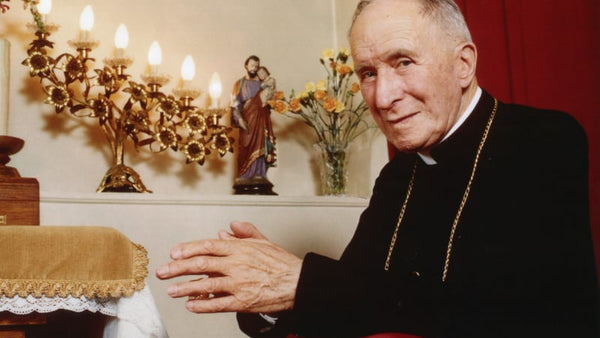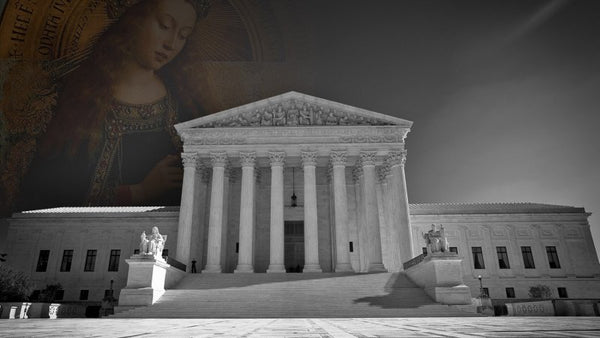SEPTEMBER 08, 2017 BY FSSPX.NEWS
On September 8, 1907, St. Pius X published his great encyclical against Modernism, Pascendi Dominici Gregis.
This major document remains just as pertinent 110 years later.
In 1974, Fr. Roger-Thomas Calmel, OP wrote a preface to the second edition of the Catéchisme sur le modernisme (Catechism on Modernism) in which Fr. Jean-Baptiste Lemius, OMI, presents the encyclical Pascendi in a question-and-answer format. In his preface, the Dominican theologian considers whether there exists a remedy for Modernism which has infected the Church like gangrene, and his answer is:
It exists for sure. There are several, in fact. The evil is not incurable, since by faith we are sure that the gates of Hell will not prevail (Mt. 16:18), since the Lord will not leave us orphans (Jn. 14:18), since none can take from the Lord the sheep He holds in His hand (Jn. 10:28), since the Lord will continue to offer His sacrifice through the ministry of His priests donec veniat, until He returns (I Cor. 11:26). Therefore the evil the Church is undergoing will not destroy the Church. It can be healed. But this time, unlike what happened in the beginning of the century, the evil has greatly penetrated into the hierarchy itself. So long as the hierarchy has not eliminated the poison that infects it, the remedy can only be partial and limited. Doubtless the remedy will not come from the hierarchy alone, nor from the head alone. The body has to rid itself of the poison in all its members. But it remains that for the whole to be healed, the head needs to recover.
When we seek to find what remedy should be applied against Modernism, three fundamental questions arise: the question of the head of the Church, the question of the testimony to be rendered, and the question of theological studies.”
The Testimony of Tradition
Speaking of the testimony to be given by members of the Church, Fr. Calmel explains the precise conditions needed for this witness to be a truly Catholic response to Modernism. The most important passages are emphasized:
It is indispensable to confess the Faith, to bear public witness both with humility and gentleness and with pride and patience. For true confession of the Faith is a work of love, humility, goodness, and not only fortitude and courage. However, in times of Modernist revolution, new difficulties arise which keep the confession of the Faith and of the sacraments of the Faith from being a great work of love. But if it is not that, it remains very insufficient in the presence of God, angels, and men. If we had to bear witness to the traditional Catholic Mass before classic persecutors, if we had to face the tribunals of Terror and the Directory like our elders, we would obviously expose ourselves to a violent death simply by attending a Catholic Mass. In these conditions, how could we not hear or celebrate Mass with increased fervor? The violence would place us in a near occasion, so to speak, of growing in love in order not to commit the sin of denying the Faith. But today we have to deal with the Modernist revolution and not a violent persecution.
“Bearing witness to the traditional Catholic Mass undoubtedly requires a patient effort, but it does not actually place us in a state of necessarily growing in charity when we celebrate or hear Mass. We do not necessarily become apostates of the Mass if we continue to go with mediocre dispositions, whereas our persecuted elders would have become apostates if their interior dispositions had remained ordinary. There are in fact faithful and priests who, though they surely make an effort to confess their faith in the traditional Catholic Mass, persist in celebrating or hearing Mass with practically unchanged lukewarm dispositions. They do not seem to act with the great love that animated the martyrs of the Terror when they exposed themselves to death for going to the Mass of a refractory priest. They bear witness to the traditional Catholic Mass to a certain extent without being obliged to assist at or celebrate Mass with much love.
“Today there is practically no stimulus coming from the outside; but even without external provocation, the interior fire of divine life and mental prayer should be intense enough to make us bear witness to the Faith and the sacraments of the Faith with the love Our Lord desires. Not only Our Lord, but the souls of good will who are waiting; they hope to find this love in us, in order to find the courage themselves to turn to God and confess the Catholic Faith and the sacraments of the Faith.
The Specious Objection that Tradition is “Inadequate”
If our witness is penetrated with this love, the specious objection, that comes up in a thousand different forms, will be quickly swept aside. They tell us, ‘By teaching the Roman catechism, maintaining the traditional, Latin, and Gregorian Catholic Mass, you have no chance of influencing souls; you are preserving museum pieces; souls need a religion adapted to their needs; and this adaptation consists in adopting the spirit of the Council, entering into the evolutionary movement you call Modernism.’ (In truth, Modernism is not an adaptation, but a perversion under the cover of adaptation: non profectus sed permutation, in the words of St. Vincent of Lerins.)
“We know perfectly well that it belongs to the supreme authority to make ritual adaptations of general importance, and even more so to provide dogmatic explanations. When this authority is deficient, does any adaptation become impossible and are we left with being unadapted to our brothers of today, insofar as we confess the Faith of all times? It is a specious question and it is almost entirely resolved when the testimony is given with charity. For charity makes one attentive to the true needs of others, able to sense the right way to present the religion of all times so that it remains fitting in the present situation without being either corrupted or tampered with.
"Even when the supreme authority is deficient and the general adaptations, far from being accomplished in truth, have taken on the form of general perversions, even in these extreme cases, charity shows the simple priest and even more so the bishop, within the restricted field of his authority, the best way of preaching healthy doctrine and celebrating the Catholic Mass with the participation of the faithful without upsetting anything. There is no shortage of examples. The priests who keep the traditional, Latin, and Gregorian Catholic Mass out of a loving attachment to the Sovereign Priest, and therefore, inseparably, out of zeal for souls, know how to take care of the faithful and bring them to participate in the holiest possible way. These same priests captivate children by teaching them the catechism of St. Pius X and do not think they need to give in to Modernism in order to find a suitable way of teaching. However, these well-adapted presentations or this faithful adaptation can only be accomplished on two conditions: first meditating unceasingly on the traditional doctrine and rites in order to hold them as they are and never change or deform them; and then living in union with God so that the witness one bears to the Catholic Faith, the firm testimony one upholds, is a result of love.
The Spiritual Testament of Archbishop Lefebvre
For more on these interior dispositions that Fr. Calmel sees as indispensable in order to offer an effective remedy for the Modernist crisis ravaging the Church, the reader is invited to reread the Spiritual Journey of Archbishop Marcel Lefebvre, in which the founder of the Society of St. Pius X, one year before his death, recalled
the need, not only to confer the authentic priesthood, to teach not only the sana doctrina approved by the Church, but also to transmit the profound and unchanging spirit of the Catholic priesthood essentially bound to the great prayer of Our Lord which His Sacrifice on the Cross expresses eternally. (p. iii)
And he developed this thought a few pages further on:
Given that the Summa of St. Thomas represents the framework of knowledge of the Faith for each seminarian or priest who wishes, according to the desire of the Church, to enlighten his intelligence with the light of Revelation, and acquire accordingly divine wisdom, it seems to me supremely desirable that these priestly souls find in this Summa not only the light of the faith but also the source of sanctity, of a life of prayer and contemplation, of a total and unreserved offering of themselves to God by Our Lord Jesus Christ Crucified, thus preparing themselves and preparing the souls which are entrusted to them for a blessed life in the bosom of the Holy Trinity.” (p. 14)
He then went on to voice his wish for priests to write “a spiritual Summa from the Summa Theologica of St. Thomas”, of which he gives a luminous outline in his Spiritual Journey.
Some may tacitly criticize what they see as too spiritual a vision of the fight for the Faith, thinking it is a failure to understand the priorities and current emergencies…and, in a sense, a form of demobilization. Fr. Calmel shows at the end of his preface the exact nature of this fight that a soldier would call asymmetrical, and forcefully recalls the One who in these circumstances remains our indispensable help:
Our fight against Modernism, even if waged in prayer as it should be, even if the appropriate weapons are used, remains out of proportion with the evil. This time, the apostasy has fine-tuned its methods too perfectly for it to be defeated without a miracle. Let us never cease to implore the Immaculate Heart of Mary for this miracle. Let us continue the fight with all our strength as useless servants, but let us place our hope more than ever in the all-powerful intercession of Mary, the Mother of God ever Virgin, for it is she who, once again, will be victorious over heresy. Gaude Maria Virgo, cunctas haereses sola interemisti quae Gabrielis archangeli dictis credidisti.
After all, it was on September 8, the feast of the Nativity of the Most Blessed Virgin Mary, that St. Pius X published his encyclical against Modernism.
Sources: Forts dans la Foi n°32-34, 1974/Itinéraire spirituel – FSSPX.News – 09/08/17





Angelus Press
Author